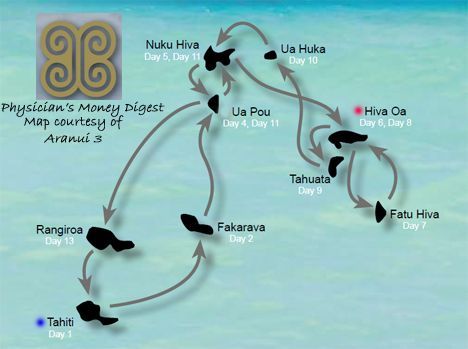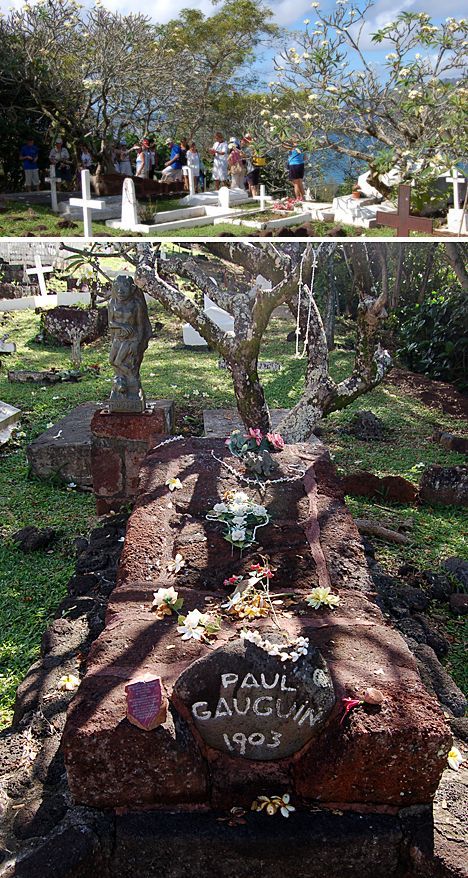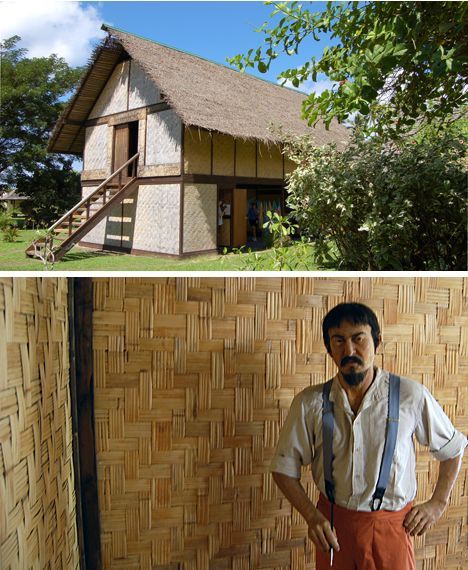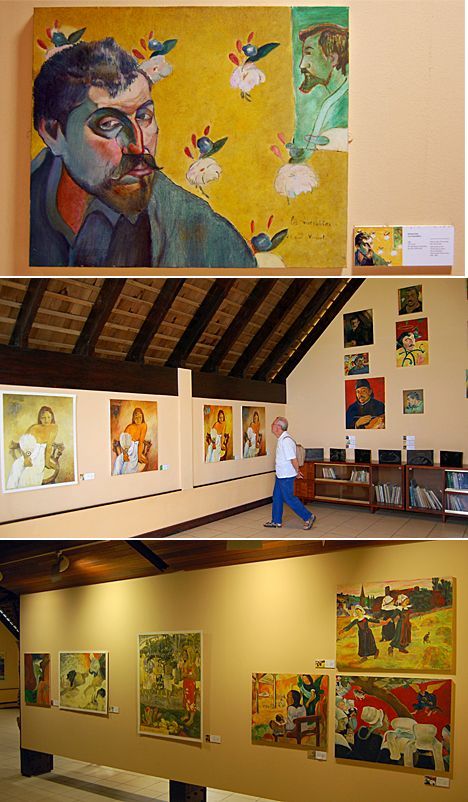Article
Into French Polynesia II: An Artist, a Poet and an Airplane
Author(s):
On the island of Hiva Oa two famous men who lived very different lives are buried there: the artist Paul Gauguin, who infuriated local priests, and poet and songwriter Jacques Brel, who flew sick children to the hospital on another island.
Hiva Oa is not the largest island in the Marquesas (Nuku Hiva can make that claim), but it is the best known, perhaps because artist Paul Gauguin lived there during the last 12 years of his life. His Bohemian lifestyle infuriated the local priests. Gauguin also had problems with the French authorities and was about to be imprisoned for three months in 1903 when Gauguin, according to the website, “ill with syphilis he suddenly died … either of a heart attack or from an overdose of morphine.”

Papeete on the main island of Tahiti has paid tribute to Gauguin by creating a somewhat insipid museum there, dull because it doesn’t have any original art. Just as everyone in Provence once went hunting in their attics —
in vain —
for a possible original van Gogh, so the residents of French Polynesia have searched fruitlessly for an original Gauguin. There isn’t such an item anywhere in the islands.

è
Accordingly, as the discharges its heavy shipments into trucks and, at the same time, unloads its passengers into the main town, Atuona, visitors are not expecting to find an exclusive piece of Gauguin’s art on Hiva Oa. But as they gaze up at the majestic mountain, the Temetiu, they do hope to learn something about this larger-than-life man, Eugne Henri Paul Gauguin, who has been called France’s most famous Post-Impressionist painter.

è
The ground to the east of town starts to rise. The small group of passengers hurries up the slope to the Calvary cemetery as if, somehow, Gauguin might be planning to leave. A mountain goat (someone shouts “chvre des montagnes!”) scampers along the hillside. A passenger argues it’s probably domesticated —
and the discussions continue until we are suddenly standing at Gauguin’s grave.

It is surprisingly mournful to be standing there under the blossoms of a frangipani tree, inhaling the perfume of an adjacent plumeria, and surrounded by tributes scattered by visitors around his burial site. Life can be brief, someone says. He was only 54 when he died. He did, however, live every minute of it, says another of our small group.

S
ic Transit Gloria
Soyez amoureuses et vous serez heureuses
might be the thought of yesterday’s Latin teachers and today’s songwriters but the words written by the door of the recreated House of Pleasure (where Gauguin lived with his pubescent local girls) carry the title of one of his 1898 paintings (Be amorous and you will be happy). Except … the French plural implies he was speaking to more than one mistress!

N
ext door, the Gauguin Cultural Center offers a fascinating collection of reproductions of his work. The Center is painstaking in pointing out the works are reproductions by art scholars Viera and Claude-Charles Farina. The Farinas painted 75 separate copies of Gauguin’s work from 2000 to 2003 then donated them to the Center.
The Farinas have said they volunteered “so the community and the audience can access in a single location a significant and coherent ensemble of reproductions of works by Paul Gauguin ... faithful to the originals given the limitations of available documentation.”

Ne Me Quitte Pas
A few yards from Gauguin’s grave lies that of Belgian poet, songwriter and actor, Jacques Brel, and his wife Madly. Although Gauguin earned a mixed reception in Hiva Oa where the police authorities and the church found his lifestyle offensive, Brel was beloved by the locals. He is said to have influenced both David Bowie and Rod McKuen. Brel wrote many songs, some heartbreaking such as, sung so poignantly by both Edith Piaf and Marlene Dietrich.

If You Go Away
McKuen wrote the English language lyrics for that song as , and singers lining up to record it have included Tom Jones, Julio Inglesias, Frank Sinatra and Neil Diamond. Versions were added by Madonna, Barbra Streisand, Shirley Bassey, Dusty Springfield and Celine Dion, too.
Brel also directed two films, one of which was nominated for the Palme d’Or in the Cannes Film Festival of 1973.
But what made him special to his friends was his generosity and kindness. He was a true friend. Sailing around the world on his own boat, he turned around immediately to France from the South Pacific when he heard a friend, JoJo, was seriously ill.
When Brel developed lung cancer he came back to the Marquesas. He reactivated his pilot’s license and bought a twin Bonanza. He based his airplane on Hiva Oa and named it JoJo after the friend who had died. He often flew sick children from his island to the hospital in Papeete and when Brel, himself, died at the age of 49 in 1978 his family could surely look back on his life with pride.

Aranui 3
The island is not so isolated now. It even has a little terminal for Air Tahiti. And while passengers shop for locally dyed fabrics a little girl (about the age of some of the children Jacques Brel flew to the hospital), sits unconcernedly blowing bubbles without realizing, perhaps, that life is easier on her island now than it was in those days before the freighter made regular comfort visits to her world.
The Man Who Cried Orange: Stories from a Doctor's Life.
The Andersons, who live in San Diego, are the resident travel & cruise columnists for Physician's Money Digest. Nancy is a former nursing educator, Eric a retired MD. The one-time president of the NH Academy of Family Practice, Eric is the only physician in the Society of American Travel Writers. He has also written five books, the last called
Photography by the authors




